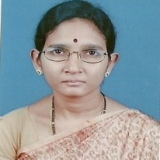International Journal of Computer Network and Information Security (IJCNIS)
IJCNIS Vol. 9, No. 7, 8 Jul. 2017
Cover page and Table of Contents: PDF (size: 687KB)
Performance Analysis of Rectangular and circular Shape Building Deployment for an Indoor Visible Light Communication System
Full Text (PDF, 687KB), PP.11-19
Views: 0 Downloads: 0
Author(s)
Index Terms
Average outage area ratio, hyper-heuristic evolutionary algorithm, indoor VLC system, root mean square delay, Signal to Noise Ratio
Abstract
The LED (Light emitting diode) based lighting systems are gaining popularity for its dual use i.e. for energy efficient lighting systems as well as for indoor optical wireless communication systems. Although, Visible light spectrum has the capability to provide very large system bandwidth (in THz), yet these systems have the limitation on account of limited modulation bandwidth. Besides, Visible light communication (VLC) systems also suffer due to multi-path propagation resulting in further depletion of system bandwidth due to pulse broadening. Therefore, one of the deployment objective of a visible light communication (VLC) system is to reduce the root mean square (RMS) delay parameter besides minimizing the number of LEDs. Hence, performance analysis of two geometrical shape structures mainly rectangular and circular models are explored for ubiquitous indoor coverage using hyper- heuristics evolutionary algorithm(HypEA) under spatial receiver mobility. Therefore, it is possible to achieve lower RMS delay spread and hence multi- fold increase in the overall system bandwidth without the use of complex system techniques like OFDM- MIMO etc.
Cite This Paper
Ram Sharma, A. Charan Kumari, "Performance Analysis of Rectangular and circular Shape Building Deployment for an Indoor Visible Light Communication System", International Journal of Computer Network and Information Security(IJCNIS), Vol.9, No.7, pp.11-19, 2017. DOI:10.5815/ijcnis.2017.07.02
Reference
[1]A. Kelly, “High-speed GaN micro-LED arrays for data communications,” Proceedings of the 14th ICTON Coventry, U.K., pp.1-5, 2012.
[2]S. Zhang, “1.5 Gbit/s multi-channel visible light communications using CMOS-controlled GaN-based LEDs,” Journal of Light wave Technology, vol. 31, no. 8, pp. 1211-1216, 2013.
[3]Jyoti Madaan, Indu Kashyap, "Vertical Handoff with Predictive Received Signal Strength in Next Generation Wireless Network", International Journal of Computer Network and Information Security(IJCNIS), Vol.8, No.8, pp.27-38, 2016.
[4]V. Chandrasekhar, J. Andrews, and A. Gatherer, "Femtocell Networks: A Survey," IEEE Communications Magazine, vol. 46, no. 9, pp. 56-67, sep. 2008.
[5]Y. Tanaka, T. Komine, S. Haruyama, and M. Nakagawa, "Indoor Visible Communication Utilizing Plural White LEDs as Lighting," IEEE International Symposium on Personal, Indoor and Mobile Radio Communications, San Diego, CA, USA, pp. 81-85, vol. 2, Oct.3, 2001.
[6]G. Auer, "How Much Energy Is Needed to Run a Wireless Network," IEEE Wireless Communications, vol. 18, no. 5, pp. 40-49, Oct. 2011.
[7]H. Burchardt, N. Serafimovski, D. Tsonev, Stefan Videv and Harald Haas, VLC: Beyond Point-to-Point Communication, IEEE Communications Magazine, pp. 98-105, Jul. 2014.
[8]Sharma R.K., Kaushal. H., Sharma P.K., “Analysis of indoor FSO link under diffused channel topology,” Proceedings of IEEE International Conference on Computing, Communication and Automation (ICCCA), Noida, India, May 2015.
[9]G. Pang, T. Kwan, C.-H. Chan, and H. Liu, “Led trans light as a communications device”, IEEE International Conference on Intelligent Transportation Tokyo, Japan, pp. 788-793, 1999.
[10]Jupeng Ding, “Evolutionary Algorithm Based Power Coverage Optimization for Visible Light Communications”, IEEE Communications Letters, vol. 16, no. 4, pp. 439-441, Apr. 2012.
[11]J. P. Ding and Y. F. Ji, “Evolutionary algorithm-based optimization of the signal to noise ratio for indoor visible-light communication utilizing white light-emitting diode,'' IET Optoelectronics, vol. 6, no. 6, pp. 307-317, Sep. 2012.
[12]Rui Guan, Jin Yuan-Wang, Yun Peng-Wen, Jun Bo-Wang, “PSO-based LED deployment optimization for visible light communications”, IEEE International Conference on Wireless Communications and Signal Processing (WCSP), China, pp. 24-26 Oct. 2013.
[13]C. Chow, C. Yeh, Y. Liu, P. Huang, and Y. Liu, “Adaptive scheme for maintaining the performance of the in-home white-led visible light wireless communications using OFDM, ” Optics Communications, vol. 292, no. 1, pp. 49- 52, 2013.
[14]Y. Wang, N. Chi, J. Yu, and H. Shang, “Demonstration of 575-mb/s downlink and 225-mb/s uplink bi-directional scm-WDM visible light communication using RGB led and phosphor-based led'' Optics Express, vol. 21, no. 1, pp. 1203-1208, 2013.
[15]M. Biagi, T. Borogovac, and T. Little, “Adaptive receiver for indoor visible light communications, ” Journal of Lightwave Technology, vol. 31, no. 23, pp. 3676-3686, 2013.
[16]A. Nabih, Z. Rashed, "Optimization Design Parameters of Electro-optic Modulators for Low Loss Wide Bandwidth Capability of Optical Communication Systems," International Journal of Computer Network and Information Security(IJCNIS), Vol. 4, No. 5, June 2012.
[17]R. Sharma, M. Aggarwal, S. Ahuja, "Performance Analysis of Indoor FSO Communication Systems Under Receiver Mobility," IEEE International Conference on Micro-Electronics and Telecommunication Engineering (ICMETE)} Ghaziabad, India, 2016.
[18]R. Sharma, M. Aggarwal, S. Ahuja, "Channel Capacity and BER Estimation of Indoor Optical Wireless Communication System Under receiver mobility, "Journal of Optical Communication," De Gruyter, 2017.
[19]G.Kendall and M.Mohamad, “Channel assignment optimization using a hyper-heuristic,” Proceedings of IEEE Conference on Cybernetics and Intelligent Systems, pp.791-796, 2004.
[20]A. Charan Kumari and K.Srinivas, “Hyper-heuristic approach for multi-objective software module clustering”, Journal of Systems and Software, Volume 117, Pages 384-401, July 2016.
[21]D. Bykhovsky and S. Arnon, “Multiple access resource allocation in visible light communication systems,” Journal of Lightwave Technology, vol. 32, no. 8, pp. 1594-1600, 2014.
[22]S. Arnon, "Visible Light Communication," Cambridge University Press, Feb. 2015.
[23]R. F. Karlicek, "Smart lighting-Beyond simple illumination," in Photonics Society Summer Topical Meeting Series, IEEE, pp. 147-148, 2012.
[24]W. W. R. Forum, Available: http://www.wwrf.ch/, 2014
[25]O. H. G. Access. Available: http://www.ict-omega.eu/
[26]IEEE 802.15 WPAN? Task Group 7 (TG7), Visible Light Communication, Available: http://www.ieee802.org/15/ pub/TG7.html, 3 March 2015.
[27]T. Kishi, H. Tanaka, Y. Umeda, and O. Takyu, "A High-speed LED driver that sweeps out the remaining carriers for visible light communications," Journal of Lightwave Technology, vol. 32, pp. 239-249, 2014.
[28]G. M. Lazzerini, F. Di Stasio, C. Flechon, D. J. Caruana, and F. Cacialli, “Low-temperature treatment of semiconducting interlayers for high-efficiency light emitting diodes based on a green-emitting polyfluorene derivative,” Applied Physics Letters, vol. 99, no. 24, 2011.
[29]Z. Ghassemlooy, W. Popoola, and S. Rajbhandari, Optical Wireless Communications: System and Channel Modeling with MATLAB. Boca Raton, FL: Taylor & Francis Group, 2012.
[30]G. Cossu, A. M. Khalid, P. Choudhury, R. Corsini, and E. Ciaramella, “3.4 Gbit/s visible optical wireless transmission based on RGB LED,” Opt. Exp., vol. 20, pp. B501–B506, 10 Dec. 2012.
[31]J. Vucic, C. Kottke, S. Nerreter, K. Habel, A. Buttner, K. D. Langer, and J. W. Walewski, “230 Mbit/s via a wireless visible-light link based on OOK modulation of phosphorescent white LEDs,” in Proc. Opt. Fiber Communication./Nat. Fiber Opt. Eng. Conf., pp. 1–3, 2010.
[32]Mehdi Rouissat, A. Riad Borsai, M. Chikh-Bled, "Isochronous and Anisochronous Modulation Schemes in Wireless Optical Communication Systems ", IJIEEB, vol.4, no.3, pp.19-25, 2012.
[33]J. M. Kahn and J. R. Barry, “Wireless infrared communications,” IEEE Proceedings, vol. 85, no. 2, pp. 265-298, Feb. 1997.
[34]T. Komine and M. Nakagawa, “Fundamental Analysis for Visible Light Communication System using LED Lights, ” IEEE Transactions on Consumer Electronics, Vol. 50, No. 1, 2004
[35]E. Burke, G. Kendall, J. Newall, E. Hart, P. Ross and S. Schulenburg, "Hyper-heuristics: an emerging direction in modern search technology," in Handbook of meta-heuristics. F. Glover and G.A. Kochenberger, Ed. Kluwer Academic Publishers, pp. 457-474, 2003.
[36]P. Cowling, G. Kendall and E. Soubeiga, “Hyper-heuristic Approach to Scheduling a Sales Summit,” in Proceedings of the Third International Conference of Practice And Theory of Automated Timetabling, pp. 176-190, 2001.

